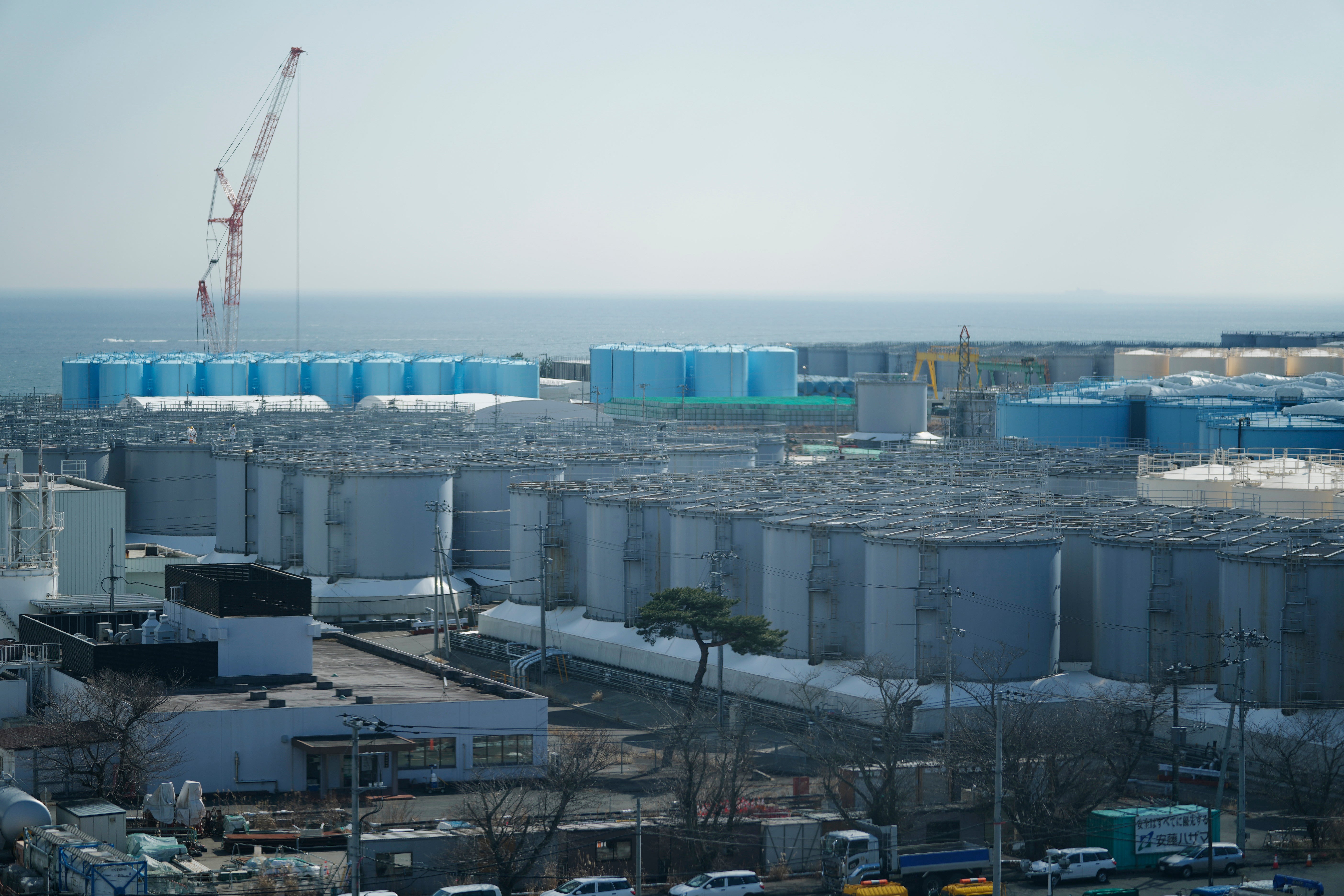Japan to release toxic water from wrecked Fukushima nuclear plant into ocean
The plan has encountered stiff resistance from fishing unions in the region, which fear its impact on their livelihoods, Thomas Kingsley reports


The impact of Japan’s 2011 earthquake and tsunami still ripples through the country as the nation continues the decommissioning process of the wrecked Fukushima Daiichi nuclear power plant.
In addition to mass evacuations of the surrounding area, the plant’s meltdown also uncovered failings by its operator to take proper precautions, resulting in hefty fines for four former executives.
The latest move involving the failed plant has brought fresh criticism as Japan’s nuclear regulators approved a plan to release water from the plant into the ocean, the government said on Friday.
The water, used to cool reactors in the aftermath of the 2011 nuclear disaster, is being stored in huge tanks in the plant, and amounted to more than 1.3 million tonnes by July.
The regulators deemed it safe to release the water, which will still contain traces of tritium after treatment, the foreign ministry said in a statement.

Plant operator Tokyo Electric Power Company (Tepco) would face additional inspections by regulators, it added.
Tepco plans to filter the contaminated water to remove harmful isotopes apart from tritium, which is hard to remove. Then it will be diluted and released to free up plant space and allow decommissioning to continue.
The plan has encountered stiff resistance from fishing unions in the region, which fear its impact on their livelihoods. Neighbours China, South Korea and Taiwan have also voiced concern.
It comes weeks after Japan announced it would lift the evacuation order for a Fukushima village, allowing some of the residents to return home almost a decade after it was deemed off-limits in the wake of the disaster.
Authorities have decided to end the “difficult-to-return” zone designation assigned to a 0.95 sq km area in the northeastern village of Katsurao, which will allow the region to host permanent residents.
In 2011, all residents of Katsurao were ordered to evacuate after a massive earthquake and tsunami, which killed nearly 20,000 people across Japan, triggered a meltdown at the Fukushima plant in what was the worst nuclear disaster on record since Chernobyl in 1986.
About 160,000 people were forced to leave their homes because of contamination by radioactive fallout.
Although 12 per cent of the prefectural land was initially said to be contaminated, several areas were gradually declared safe for residents to return to after the government’s decontamination efforts, with just 2.4 per cent of the prefecture still covered by no-go orders as of last year.
This month a Tokyo court ordered four former executives at the company behind the tsunami-wrecked Fukushima plant to pay 13 trillion yen (£79bn) to the company, holding them liable for the 2011 meltdown crisis.

In a high-profile ruling, Tokyo District Court said the former chairman of Tepco, Tsunehisa Katsumata, and three other former executives failed to fulfil their duty of taking the utmost safety precautions despite knowing the risks of a serious accident in case of a major tsunami. It said they could have prevented the disaster if they had taken available scientific data more seriously and acted sooner.
A group of 48 Tepco shareholders filed the suit in 2012, demanding that Katsumata and four others – former Tepco president Masataka Shimizu, former vice presidents Sakae Muto and Ichiro Takekuro, and another executive, Akio Komori – pay 22 trillion yen (£130bn) in damages to the company. It maintained that they had neglected to heed experts’ tsunami predictions and failed to take adequate tsunami precaution measures soon enough.
Presiding judge Yoshihide Asakura said the former Tepco executives “fundamentally lacked safety awareness and a sense of responsibility”.
The ruling noted that Tepco could have prevented the disaster if it had carried out necessary construction work to prevent the plant’s key areas from being flooded, including making its reactor buildings water-tight.






Join our commenting forum
Join thought-provoking conversations, follow other Independent readers and see their replies
Comments